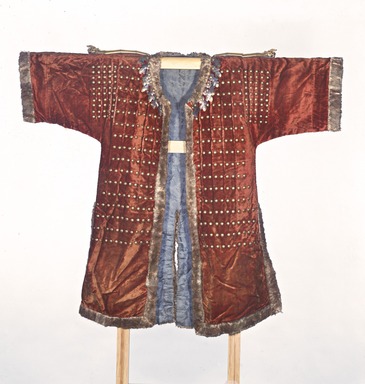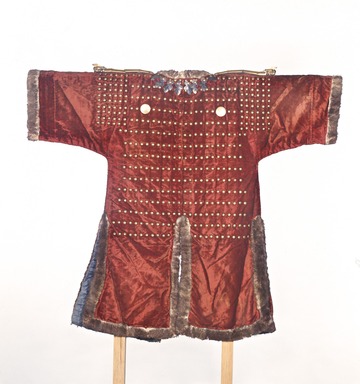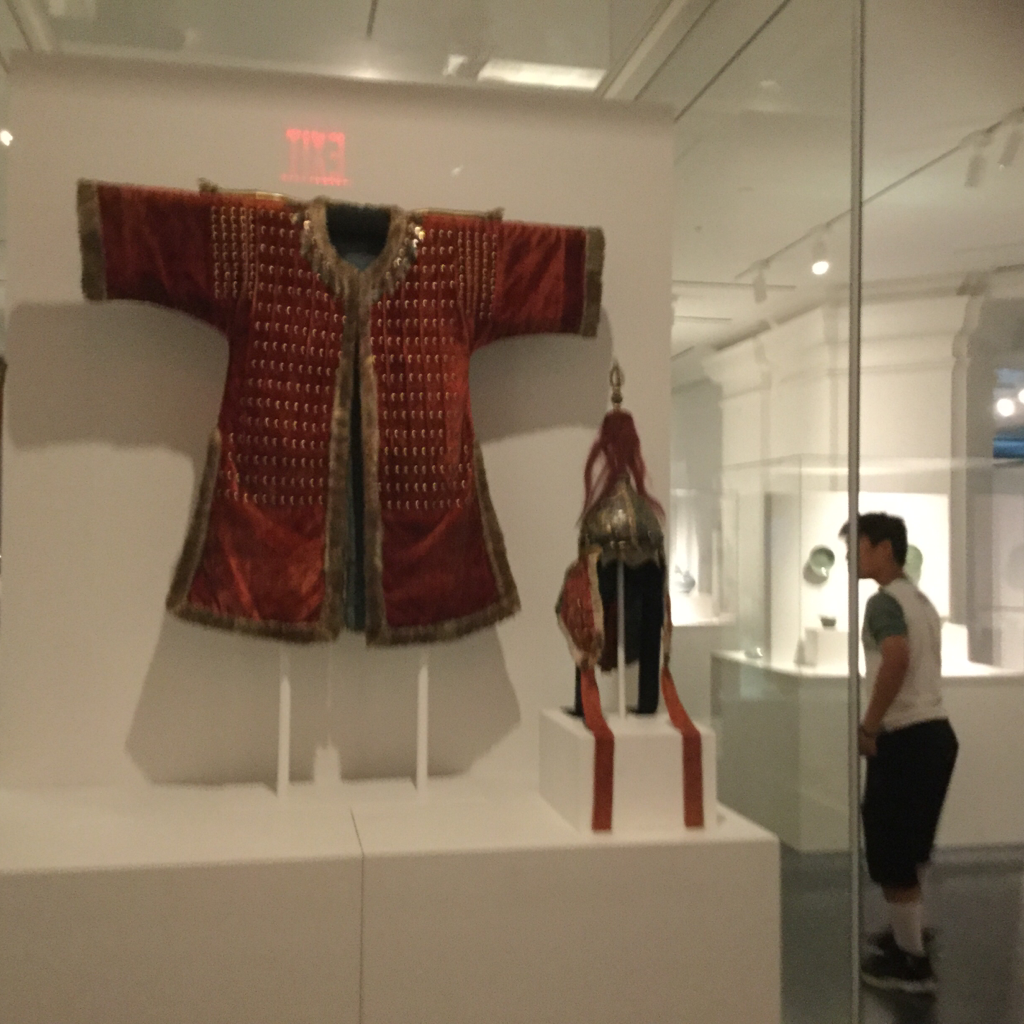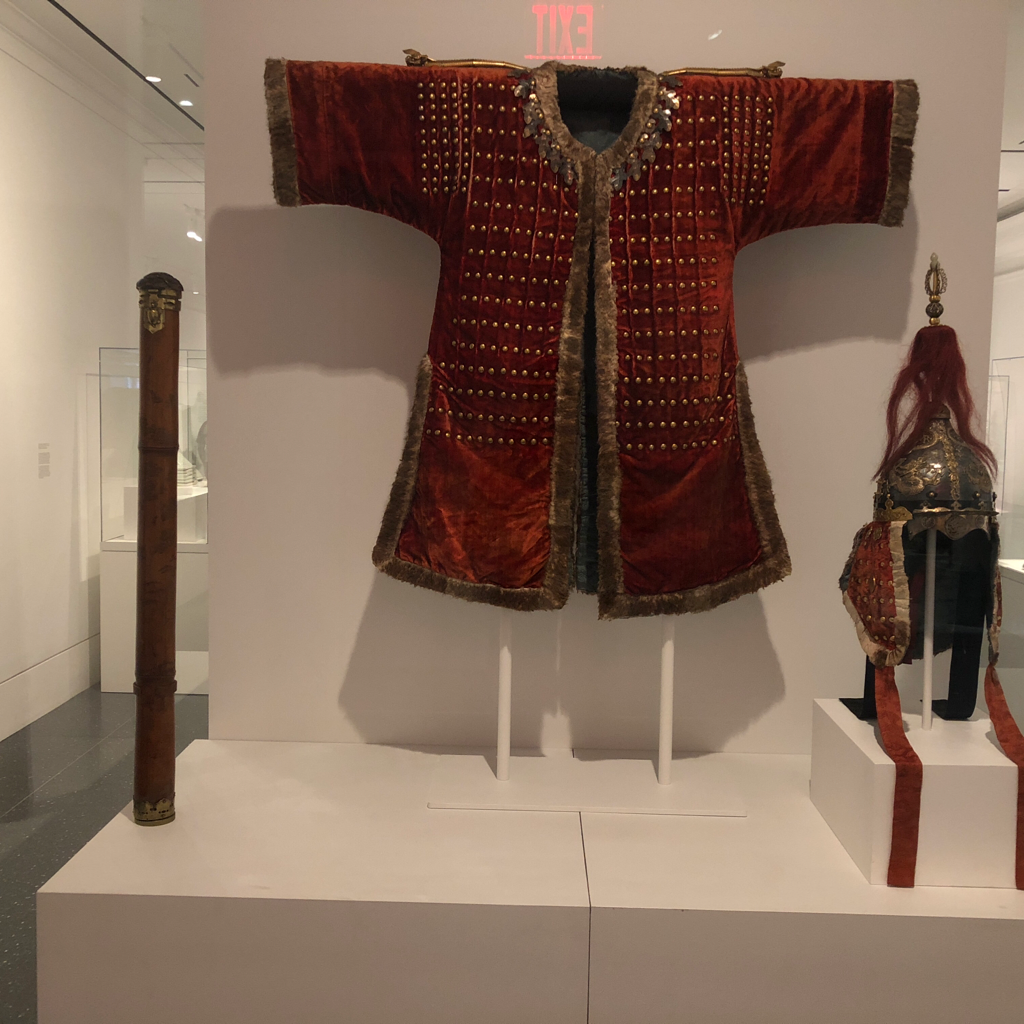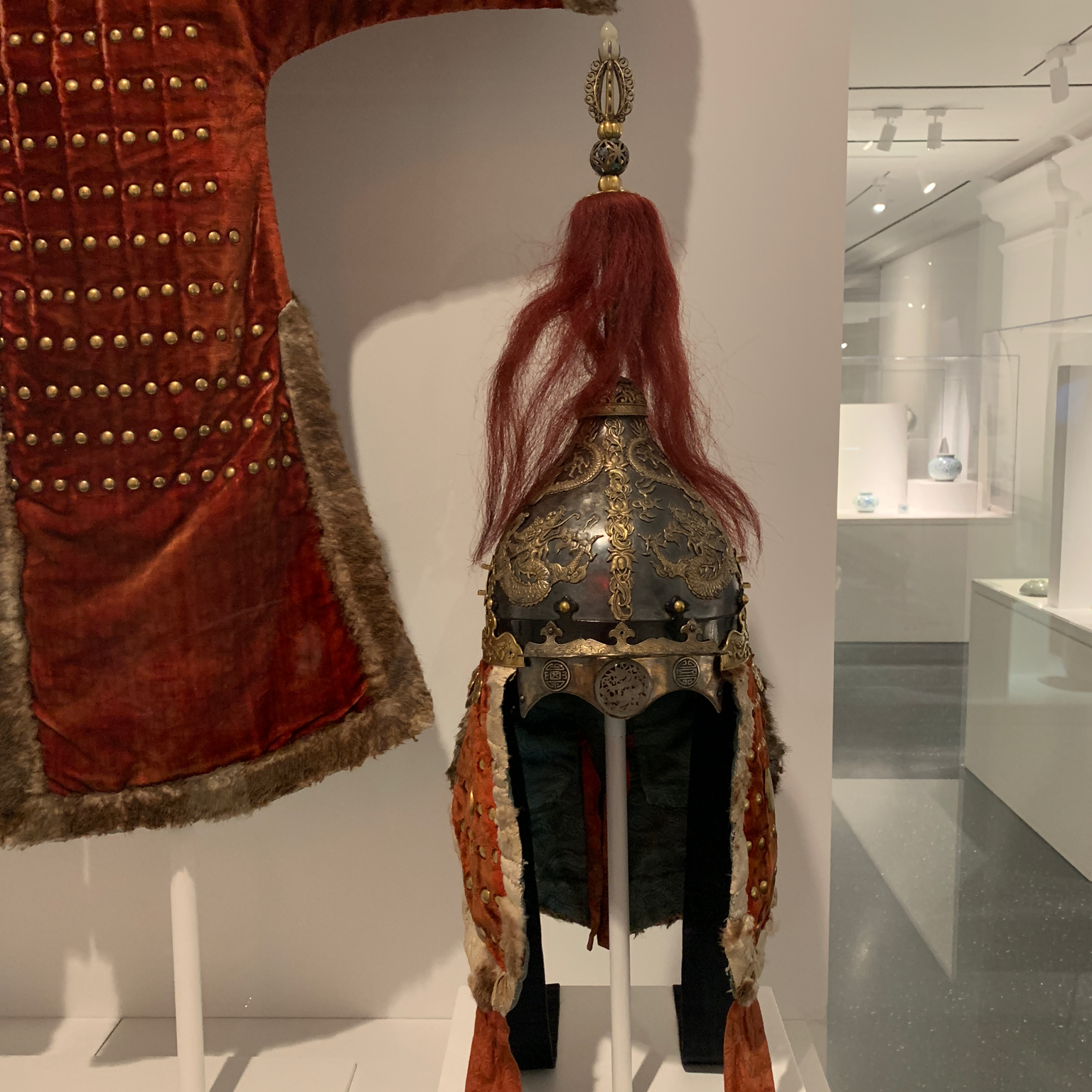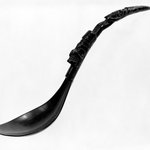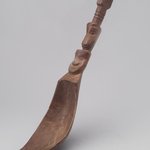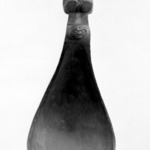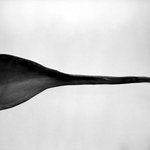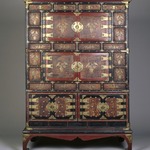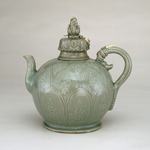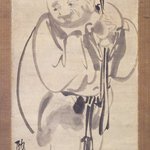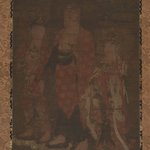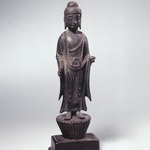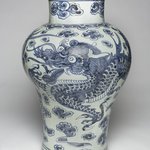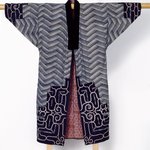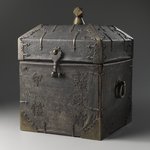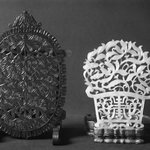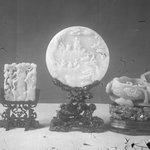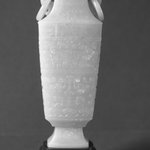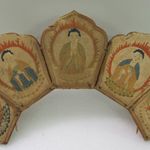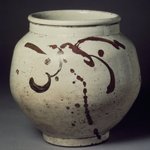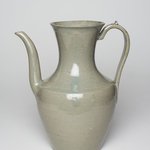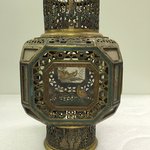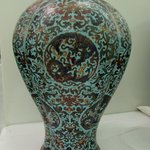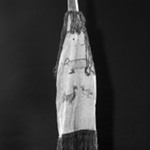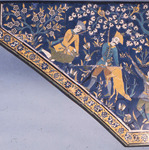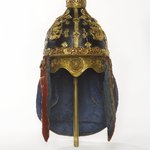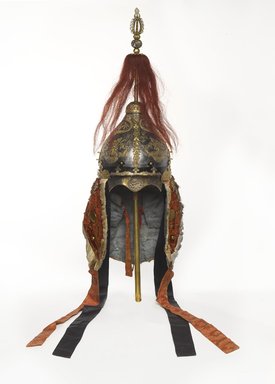

Suit of Armor (Helmet and Coat), 18th–19th century. Silver, gilt-copper, leather, lacquer, nephrite jade, suede, silk brocade, horsehair, fur, velvet, helmet: 27 in. (68.6 cm). Brooklyn Museum, Museum Collection Fund, 22.1971a-b. Creative Commons-BY (Photo: Brooklyn Museum, X957.2a_front_PS9.jpg)
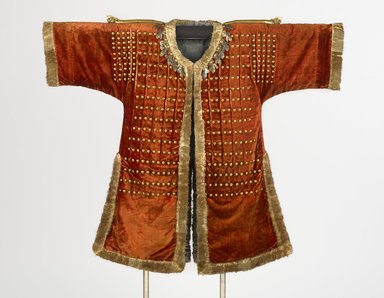
Suit of Armor (Helmet and Coat), 18th–19th century. Silver, gilt-copper, leather, lacquer, nephrite jade, suede, silk brocade, horsehair, fur, velvet, helmet: 27 in. (68.6 cm). Brooklyn Museum, Museum Collection Fund, 22.1971a-b. Creative Commons-BY (Photo: Brooklyn Museum, X957.2b_front_PS9.jpg)

Suit of Armor (Helmet and Coat), 18th–19th century. Silver, gilt-copper, leather, lacquer, nephrite jade, suede, silk brocade, horsehair, fur, velvet, helmet: 27 in. (68.6 cm). Brooklyn Museum, Museum Collection Fund, 22.1971a-b. Creative Commons-BY (Photo: Brooklyn Museum, X957.2a_SL3.jpg)
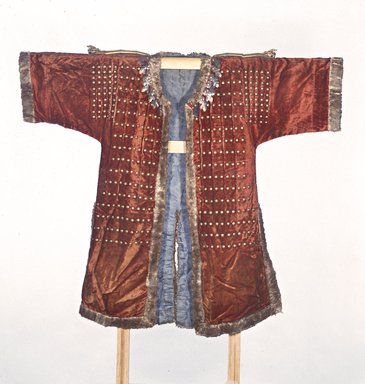
Suit of Armor (Helmet and Coat), 18th–19th century. Silver, gilt-copper, leather, lacquer, nephrite jade, suede, silk brocade, horsehair, fur, velvet, helmet: 27 in. (68.6 cm). Brooklyn Museum, Museum Collection Fund, 22.1971a-b. Creative Commons-BY (Photo: Brooklyn Museum, X957.2b_front_SL3.jpg)
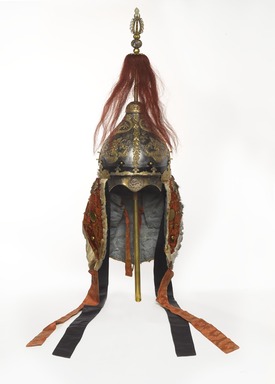
Suit of Armor (Helmet and Coat), 18th–19th century. Silver, gilt-copper, leather, lacquer, nephrite jade, suede, silk brocade, horsehair, fur, velvet, helmet: 27 in. (68.6 cm). Brooklyn Museum, Museum Collection Fund, 22.1971a-b. Creative Commons-BY (Photo: , 22.1971a_front_PS9.jpg)
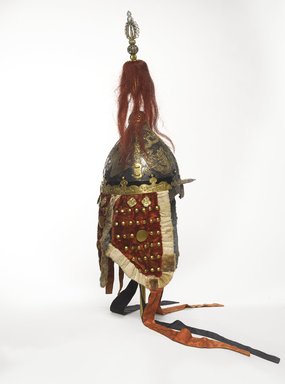
Suit of Armor (Helmet and Coat), 18th–19th century. Silver, gilt-copper, leather, lacquer, nephrite jade, suede, silk brocade, horsehair, fur, velvet, helmet: 27 in. (68.6 cm). Brooklyn Museum, Museum Collection Fund, 22.1971a-b. Creative Commons-BY (Photo: Brooklyn Museum, X957.2a_right_side_PS9.jpg)

Suit of Armor (Helmet and Coat), 18th–19th century. Silver, gilt-copper, leather, lacquer, nephrite jade, suede, silk brocade, horsehair, fur, velvet, helmet: 27 in. (68.6 cm). Brooklyn Museum, Museum Collection Fund, 22.1971a-b. Creative Commons-BY (Photo: Brooklyn Museum, X957.2b_back_PS9.jpg)
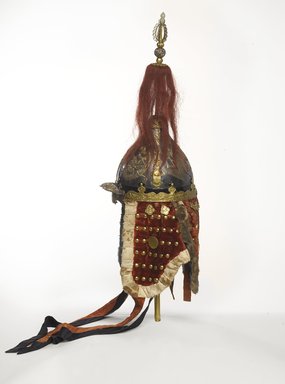
Suit of Armor (Helmet and Coat), 18th–19th century. Silver, gilt-copper, leather, lacquer, nephrite jade, suede, silk brocade, horsehair, fur, velvet, helmet: 27 in. (68.6 cm). Brooklyn Museum, Museum Collection Fund, 22.1971a-b. Creative Commons-BY (Photo: Brooklyn Museum, X957.2a_left_side_PS9.jpg)
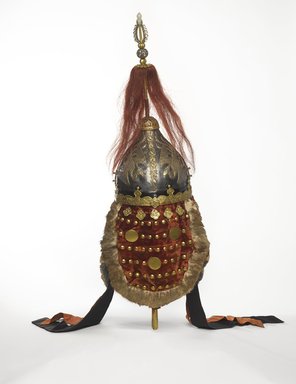
Suit of Armor (Helmet and Coat), 18th–19th century. Silver, gilt-copper, leather, lacquer, nephrite jade, suede, silk brocade, horsehair, fur, velvet, helmet: 27 in. (68.6 cm). Brooklyn Museum, Museum Collection Fund, 22.1971a-b. Creative Commons-BY (Photo: Brooklyn Museum, X957.2a_back_PS9.jpg)
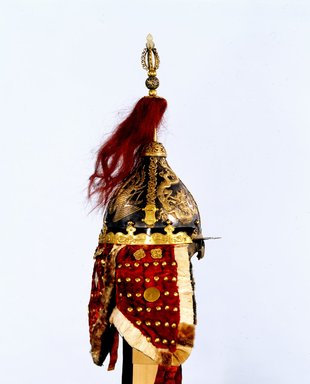
Suit of Armor (Helmet and Coat), 18th–19th century. Silver, gilt-copper, leather, lacquer, nephrite jade, suede, silk brocade, horsehair, fur, velvet, helmet: 27 in. (68.6 cm). Brooklyn Museum, Museum Collection Fund, 22.1971a-b. Creative Commons-BY (Photo: Brooklyn Museum, X957.2a_right_SL5.jpg)
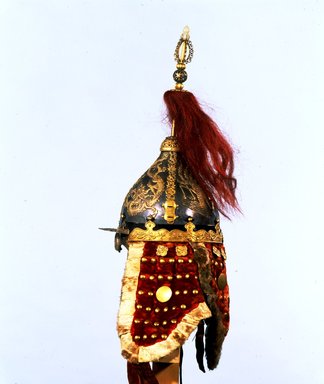
Suit of Armor (Helmet and Coat), 18th–19th century. Silver, gilt-copper, leather, lacquer, nephrite jade, suede, silk brocade, horsehair, fur, velvet, helmet: 27 in. (68.6 cm). Brooklyn Museum, Museum Collection Fund, 22.1971a-b. Creative Commons-BY (Photo: Brooklyn Museum, X957.2a_left_SL5.jpg)
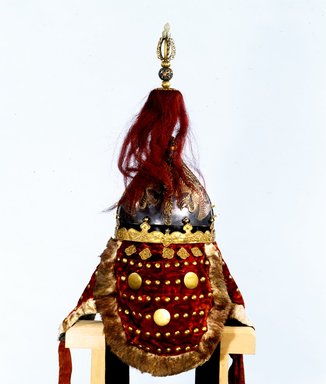
Suit of Armor (Helmet and Coat), 18th–19th century. Silver, gilt-copper, leather, lacquer, nephrite jade, suede, silk brocade, horsehair, fur, velvet, helmet: 27 in. (68.6 cm). Brooklyn Museum, Museum Collection Fund, 22.1971a-b. Creative Commons-BY (Photo: Brooklyn Museum, X957.2a_back_SL5.jpg)
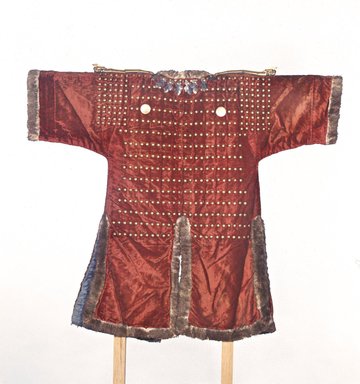
Suit of Armor (Helmet and Coat), 18th–19th century. Silver, gilt-copper, leather, lacquer, nephrite jade, suede, silk brocade, horsehair, fur, velvet, helmet: 27 in. (68.6 cm). Brooklyn Museum, Museum Collection Fund, 22.1971a-b. Creative Commons-BY (Photo: Brooklyn Museum, X957.2b_back_SL3.jpg)
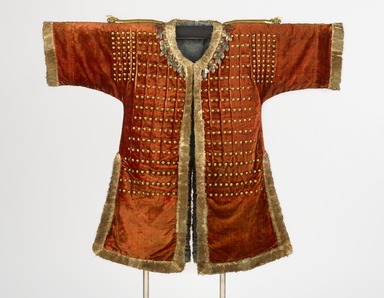
Suit of Armor (Helmet and Coat), 18th–19th century. Silver, gilt-copper, leather, lacquer, nephrite jade, suede, silk brocade, horsehair, fur, velvet, helmet: 27 in. (68.6 cm). Brooklyn Museum, Museum Collection Fund, 22.1971a-b. Creative Commons-BY (Photo: , 22.1971b_front_PS9.jpg)
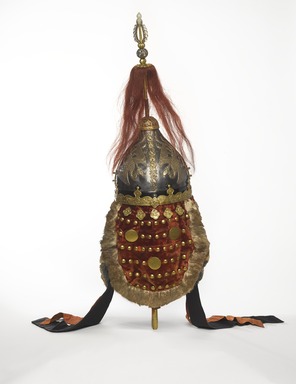
Suit of Armor (Helmet and Coat), 18th–19th century. Silver, gilt-copper, leather, lacquer, nephrite jade, suede, silk brocade, horsehair, fur, velvet, helmet: 27 in. (68.6 cm). Brooklyn Museum, Museum Collection Fund, 22.1971a-b. Creative Commons-BY (Photo: , 22.1971a_back_PS9.jpg)
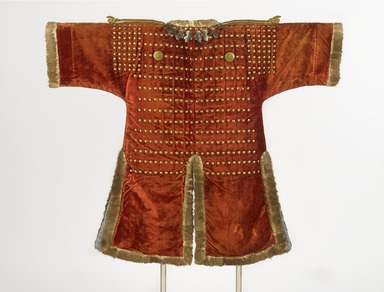
Suit of Armor (Helmet and Coat), 18th–19th century. Silver, gilt-copper, leather, lacquer, nephrite jade, suede, silk brocade, horsehair, fur, velvet, helmet: 27 in. (68.6 cm). Brooklyn Museum, Museum Collection Fund, 22.1971a-b. Creative Commons-BY (Photo: , 22.1971b_back_PS9.jpg)

Suit of Armor (Helmet and Coat), 18th–19th century. Silver, gilt-copper, leather, lacquer, nephrite jade, suede, silk brocade, horsehair, fur, velvet, helmet: 27 in. (68.6 cm). Brooklyn Museum, Museum Collection Fund, 22.1971a-b. Creative Commons-BY (Photo: , 22.1971a_left_side_PS9.jpg)

Suit of Armor (Helmet and Coat), 18th–19th century. Silver, gilt-copper, leather, lacquer, nephrite jade, suede, silk brocade, horsehair, fur, velvet, helmet: 27 in. (68.6 cm). Brooklyn Museum, Museum Collection Fund, 22.1971a-b. Creative Commons-BY (Photo: , 22.1971a_right_side_PS9.jpg)

Suit of Armor (Helmet and Coat), 18th–19th century. Silver, gilt-copper, leather, lacquer, nephrite jade, suede, silk brocade, horsehair, fur, velvet, helmet: 27 in. (68.6 cm). Brooklyn Museum, Museum Collection Fund, 22.1971a-b. Creative Commons-BY (Photo: , 22.1971a_SL3.jpg)
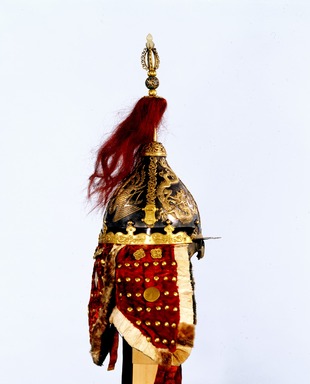
Suit of Armor (Helmet and Coat), 18th–19th century. Silver, gilt-copper, leather, lacquer, nephrite jade, suede, silk brocade, horsehair, fur, velvet, helmet: 27 in. (68.6 cm). Brooklyn Museum, Museum Collection Fund, 22.1971a-b. Creative Commons-BY (Photo: , 22.1971a_right_SL5.jpg)
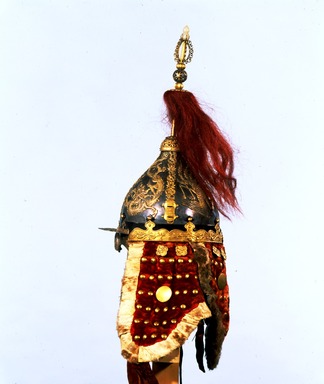
Suit of Armor (Helmet and Coat), 18th–19th century. Silver, gilt-copper, leather, lacquer, nephrite jade, suede, silk brocade, horsehair, fur, velvet, helmet: 27 in. (68.6 cm). Brooklyn Museum, Museum Collection Fund, 22.1971a-b. Creative Commons-BY (Photo: , 22.1971a_left_SL5.jpg)
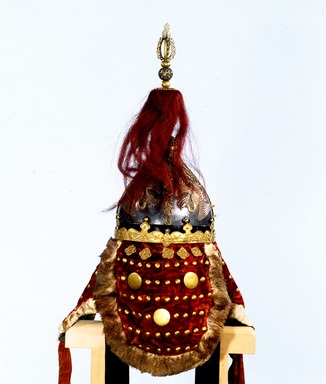
Suit of Armor (Helmet and Coat), 18th–19th century. Silver, gilt-copper, leather, lacquer, nephrite jade, suede, silk brocade, horsehair, fur, velvet, helmet: 27 in. (68.6 cm). Brooklyn Museum, Museum Collection Fund, 22.1971a-b. Creative Commons-BY (Photo: , 22.1971a_back_SL5.jpg)
Suit of Armor (Helmet and Coat)
Asian Art

